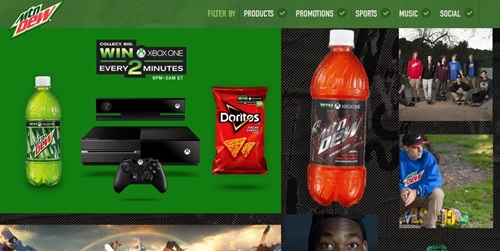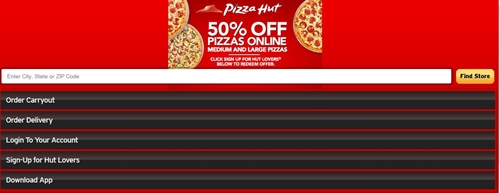 Successful mobile marketing is all about context. A study by Nielsen and Google found that “in the moment” searches are by far the most popular with 85% of smartphone users looking for local information and 81% following up to take action.
Successful mobile marketing is all about context. A study by Nielsen and Google found that “in the moment” searches are by far the most popular with 85% of smartphone users looking for local information and 81% following up to take action.
But what kind of content makes sense on a mobile device vs. the content marketing being published online? What effect does mobile content have on creating compelling customer experiences and how does mobile fit with other online marketing efforts like SEO, social and ads?
One thing that has become clear is that since Google’s Hummingbird update, mobile can no longer be viewed as a separate channel. For forward-thinking marketers, the practice of optimizing for mobile across the span of customer touch points must be incorporated into your integrated marketing mix. If not, you risk alienating your customers.
But businesses and brands may be missing the bigger question – how will this trend toward mobile accessibility affect their current content marketing strategy?
In order for a content marketing strategy to be successful, it’s important that the approach represent a deeper understanding of your users’ behavior and what that means for both your content creation and user’s experience.
With mobile marketing, the better you understand your audience’s information discovery and consumption habits, the more compelling your content will be. Specifically, understanding the makeup of their mobile universe will help you create content that feels native – rather than retroactively shoehorned to fit in.
Content marketers recognize that web site design forms an integral part of content marketing. With smartphones, that may require implementing responsive web design and creating a web portal that works well across all devices. Customers expect a congruent experience across devices and channels, so it pays for your brand to give them what they want.
As Greg Hickman so aptly pointed at Blogworld #NMX and summarized here in TopRank’s live blog coverage, 74% of consumers will leave a mobile site after just five seconds and 46% are unlikely to return if the site didn’t work the first time. It’s essential for the mobile content experience to meet and exceed customer expectations in the first few seconds.
Mobile Content Marketing Statistics:
To get a better handle on the mobile universe, here are a few more mind-boggling mobile usage statistics from the mobile talent management firm, Snaphop:
- Mobile web browsing accounted for 30% of all web traffic in 2012 and is expected to account for 50% by 2014. (Nucleus Research via SourceCon)
- By 2016, the number of mobile devices is expected to surpass the world’s population–an 18-fold increase between 2011 and 2016. (Cisco)
- Mobile phones accounted for more than 13% of all web traffic in August 2012. (Cisco)
- Google, Facebook, Yahoo, Amazon, and Wikimedia are the top 5 media properties accessed on mobile devices (comScore 2013)
As marketing optimization guru Bryan Eisenberg noted, “The best optimization efforts achieve usability first,” and, in the case for mobile marketing, usability equals find-ability. Most people don’t convert because internal search doesn’t work or the pages they land on don’t include the information they are looking for. This video makes the case for why businesses need a user-friendly website.
In a world that’s looking for bite size bits of information, mobile devices are not the place to offer an entire meal. People use their mobile phone, first and foremost, to access information, which is inherently local.
Consumers using smartphones report being far more likely to use their devices for local shopping while out in the world. Nearly 68% reported using their smartphones for local shopping while in store. Nearly 82% of consumers reported using their smartphones at home for local shopping, while 49% use their devices at work. And more than 40% of smartphone users reported using their devices at least once a day for local shopping. (Source: BIA/Kelsey Local Commerce Monitor survey)
When you understand that a smartphone is a tool that aids a visitor on his quest for quick results, you can focus your marketing on providing content that’s functional and accessible. For a national retailer, that would mean mapping zip code data to find a local brick and mortar store. For a local restaurant, that would mean offering only the bare essentials, exactly what someone using a mobile phone wants.
Adapting the desktop website into a mobile one means using fewer graphics, providing less text, and incorporating features native to smartphones, such as click-to-call buttons. Increasingly, users are expecting personalization and hyper-relevance.
While you don’t need to discard your current content marketing strategy, there are some creative ways you can adjust your existing content to dovetail nicely with the trend toward mobile marketing. Whether your content is an email, blog post or e-book, you can assume a wide majority of your visitors will be accessing content from their mobile device.
Mobile usage is growing immensely as the above stats show. Engagement with email has soared with 72% of smartphone users checking their inbox more than six times a day – starting as early as 7am.
Whether or not you have a mobile-friendly website, what we can use mobile for right now is brand or product awareness. Use your email campaigns to build awareness and drive your customers to your website. You might not convert them right then and there, but when they get to their tablet or laptop, they are more likely to convert. Having raised awareness with your email campaign, you want to be sure they render properly on mobile devices.
With that in mind, it’s critical that your mobile content headlines be bold, concise and benefit-rich, your content reads vertically and can be read “on the go.” This may go against the grain for SEOs following Google’s new in-depth articles feature appearing in search results. But, there are ways to work around short copy, such as including links to the full-length piece or by segmenting your email list to send teaser emails to those who’ve opted-in for the mobile version.
Mobile Content Marketing Pros:
- Growing traffic driver. 63% of adult cell owners now use their phones to go online, a figure that has doubled since they first started tracking internet usage on cell phones in 2009. (Pew Research)
- Mobile search drives multi-channel conversions.*
- Mobile search drives offline actions.*
- Mobile search is a key part of the decision-making process.*
- Mobile search triggers quick online and offline follow ups.*
*Google Think Insights – Mobile Search Moments Study
Mobile Content Marketing Cons:
- Marketing message not tailored to audience needs.
- Failing to understand your audience’s mobile usage.
- Design shoehorned in to fit the device rather than the content or context.
What the Marketing Experts are Saying:
“More and more people are consuming information on their smartphones. Write as if they will be reading on their phones, and add attention-grabbing photos that will stand out. Create content in bite-sized pieces that can be stitched together to form longer-form articles — or be kept separate to serve mobile users.” Stephanie Leffler, CEO and Co-founder, Crowdsource
“I think the first thing they need to know is how their customers and prospects use mobile devices. Don’t build your mobile content strategy in a vacuum of what you think consumers want — build it upon what you know they need and will use.” Jeff Rohrs, Head of the Marketing Research & Education Group, ExactTarget
“So what does mobile lend itself to doing? Short, low-friction actions: sharing, liking, tweeting, taking pictures, looking at pictures, reading short-form content, watching videos.” Justin Premick, Director of Education Marketing, AWeber
“Rather than trying to create content and shrink it, think about your creative and interaction design starting on the small screen first, then expand upon the experience for the larger screens.” Paolo Mottola, Digital Engagement Program Manager, REI
Examples of Effective Mobile Content:
Mountain Dew’s mobile website uses interactivity and customization to great effect. While their page may seem busy to some, it matches the high-energy, counter culture feel that matches the Mountain Dew brand. Each image on the home page opens up a larger area directly on the homepage that provides information and links for deeper reading. This allows users to see more of the content that may interest them, from sports teams to promotions, without ever needing to use the back button.

Getting it Right
- Design fits the context of a mobile device using bold colors and minimal text.
- The content is tailored to fit their audience demographics and psychographics perfectly.
- Navigation allows users to customize the home page in real time, providing a hyper-relevant personalized experience. Deselecting any option will remove the content that users do not find interesting.
- Provides an exceptional user experience that drives users toward a desired action with the creative use of motion and video.
Create Pilates offers Pilates as its foundation, but has brought together experts in complementary fields too, such as yoga, nutrition, massage and anatomy, giving birth to Pilates+.

Getting it Right
- Great use of bold dynamic visuals, clean simple fonts and minimalist text.
- Each category block opens to more information where users can view pricing, book a class or access a schedule.
- The navigation is accessible on both the left, as a drop down menu with clickable links, or on the right with interactive buttons you can tap.
You can’t get simpler than Pizza Hut’s mobile content, which incorporates a marketing message and call to action front and center. They make ordering a pizza from your mobile so enticing, that a visitor doesn’t have a chance to reconsider.

Getting it Right
- Colors are consistent with their “piping hot” branding.
- Focusing on the bare essentials increases the chance of the user completing an action.
- For location-based search, placing the “Find Store” at the top of the screen is essential for a good customer experience, leading to higher conversions.
- By including GPS features and localizing deals for individual restaurants, Pizza Hut is making it even easier for consumers to complete their orders. They’ve recently upgraded their mobile app to continue to push the hyper local experience.
Mobile Content Marketing Best Practices:
Good mobile formatting should become an essential part of your mobile-first content strategy. You want to be at the forefront of establishing a new model of writing for the web, such as
- Short copy, bold colors and minimalistic visuals.
- Creating a great user experience first, then optimizing for visuals.
- Writing an attention-grabbing, short headline that piques the users’ interest and is highly relevant. Read how to write high converting headlines here.
- Introducing video content.
- Considering how location-based technologies, like GPS-enabled apps for iOS and Android, could increase immediate engagement with your customers.
- Including clickable phone numbers/interactive maps and other interactive elements that make calls to action easy to take.
Increasing opportunities for conversion exist because mobile offers a wider range of customer touch points. In the mobile universe, conversions go way beyond the sale. Signing up for a newsletter, sharing your content through social or downloading a white paper may be valuable customer touch points. Think about the range of mobile conversions with value for your business, then create content that fits within the context of your customers’ busy lives.
Doing mobile well takes an understanding of what is and isn’t easy to do on a mobile device. If it’s not easy to do, people aren’t going to do it. Like any other content marketing strategy, optimize and design for users first.
How does mobile content fit within your content marketing strategy? Are you creating mobile specific content for your audience segments and buying cycle?
For more posts on content marketing tactics, be sure to see the index.
Photo credit: Shutterstock


